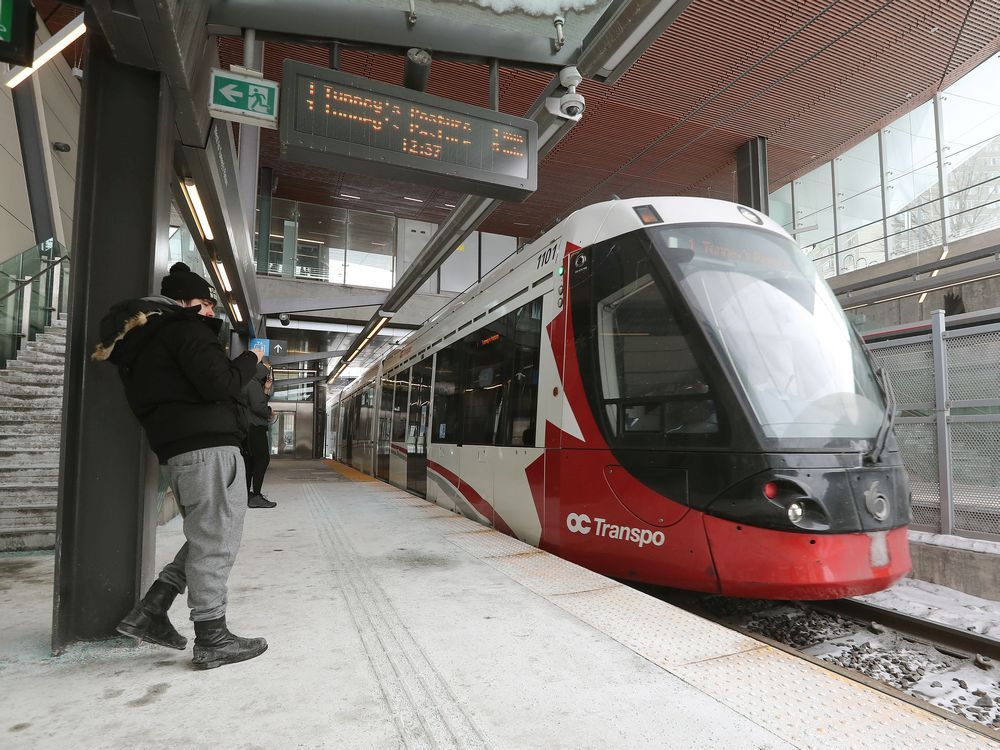You are using an out of date browser. It may not display this or other websites correctly.
You should upgrade or use an alternative browser.
You should upgrade or use an alternative browser.
Ottawa Transit Developments
- Thread starter Reecemartin
- Start date
Allandale25
Senior Member
robmausser
Senior Member
What are the implications for LRT running on heavy rail tracks though? Other than something being grossly overbuilt?
The ION LRT runs on Heavy Rail tracks through the Waterloo Spur, and seems to have no issue.
I could see the opposite being an issue, running heavy rail on light rail tracks, but other than an unnecessary expense, whats the problem with running LRT on heavy rail tracks?
smallspy
Senior Member
Rail is rail. The vehicle itself doesn't care.
(There are arguments to be made about things like rail cant, wheel profile, etc,. but by and large in this kind of implementation, you're not going to find huge variations or differences between them. We're not talking about the difference between the TTC's subways and streetcars here.)
But that said, the line was certainly built to seemingly a far higher capacity than the vehicles seem to indicate. I suspect that any comments about the vehicles running on "heavy rail tracks" have been misunderstood, and have more to do with the construction of the system as a whole.
Dan
Allandale25
Senior Member

LRT inquiry: Commissioner shoots down requests to make documents secret
During the LRT commission's investigation, commissioner Justice William Hourigan has considered applications asking to make evidence hush-hush.
superelevation
Active Member
The issue to some extent is trying to get the (actually very heavy) trains running incredibly frequently under CBTC to hit the 20,000+ ppdph capacity target. The system needs to hit capacities that are a real stretch for it's vehicles and infraRail is rail. The vehicle itself doesn't care.
(There are arguments to be made about things like rail cant, wheel profile, etc,. but by and large in this kind of implementation, you're not going to find huge variations or differences between them. We're not talking about the difference between the TTC's subways and streetcars here.)
But that said, the line was certainly built to seemingly a far higher capacity than the vehicles seem to indicate. I suspect that any comments about the vehicles running on "heavy rail tracks" have been misunderstood, and have more to do with the construction of the system as a whole.
Dan
Allandale25
Senior Member
DirectionNorth
Senior Member
It's amazing (-ly stupid) that they didn't take this opportunity to double track the Trillium Line. I get that the Dow's Lake Tunnel isn't twinable, but other chokepoints like the Walkley St Bridge (which is being extensively rehab-ed) and the Ellwood Diamond (entirely new bridge) should have been double tracked from the start.
Garuda
Active Member
Agreed. Or at the very least: future proof with piers and abutments to support the installation of a future rail decks.It's amazing (-ly stupid) that they didn't take this opportunity to double track the Trillium Line. I get that the Dow's Lake Tunnel isn't twinable, but other chokepoints like the Walkley St Bridge (which is being extensively rehab-ed) and the Ellwood Diamond (entirely new bridge) should have been double tracked from the start.
superelevation
Active Member
Sure it's twinable!, stuff like that has definetly be done, its not that large of a tunnel as well. I am sure the Swiss do it pretty regularly . . . just look at this . . .It's amazing (-ly stupid) that they didn't take this opportunity to double track the Trillium Line. I get that the Dow's Lake Tunnel isn't twinable, but other chokepoints like the Walkley St Bridge (which is being extensively rehab-ed) and the Ellwood Diamond (entirely new bridge) should have been double tracked from the start.
CapitalSeven
Senior Member
While that's a fun video it's not relevant in any way. The tunnel in question is several kilometers long, it's through deep rock, and it's already two tracks wide. The Dow's Lake tunnel is around half a km, has less than three meters of fill on top, and isn't wide enough for 2 tracks. The earlier plan to widen it was cut and cover, and involves clearcutting a swath of the Dominion Arboretum. A possible alternative could be using a road header to dig a parallel but deeper second tunnel. Any scheme resembling the Swiss video is pure fantasy.
CapitalSeven
Senior Member
To add a little detail, the Dow's Lake tunnel is 578 metres long and about 5.1 wide. As the Stadler trains are a little over 2.8 meters wide, you'd need a tunnel of at least 8 metres for double tracking. With its shallow depth, widening it by any means except cut and cover is impossible. Here is a segment of a 1960s diagram of the tunnel found on the Railways of Ottawa site. There seem to be roughly 2 feet of concrete and 10 feet of fill above the tunnel under the Arboretum, but if I'm reading the diagram correctly, there is only a thickened slab under the canal itself.

Allandale25
Senior Member
Reecemartin
Active Member
Had a great time checking out the trains during the event yesterday (and even got to go on a test train) - these trains are going to be great for Line 2!




